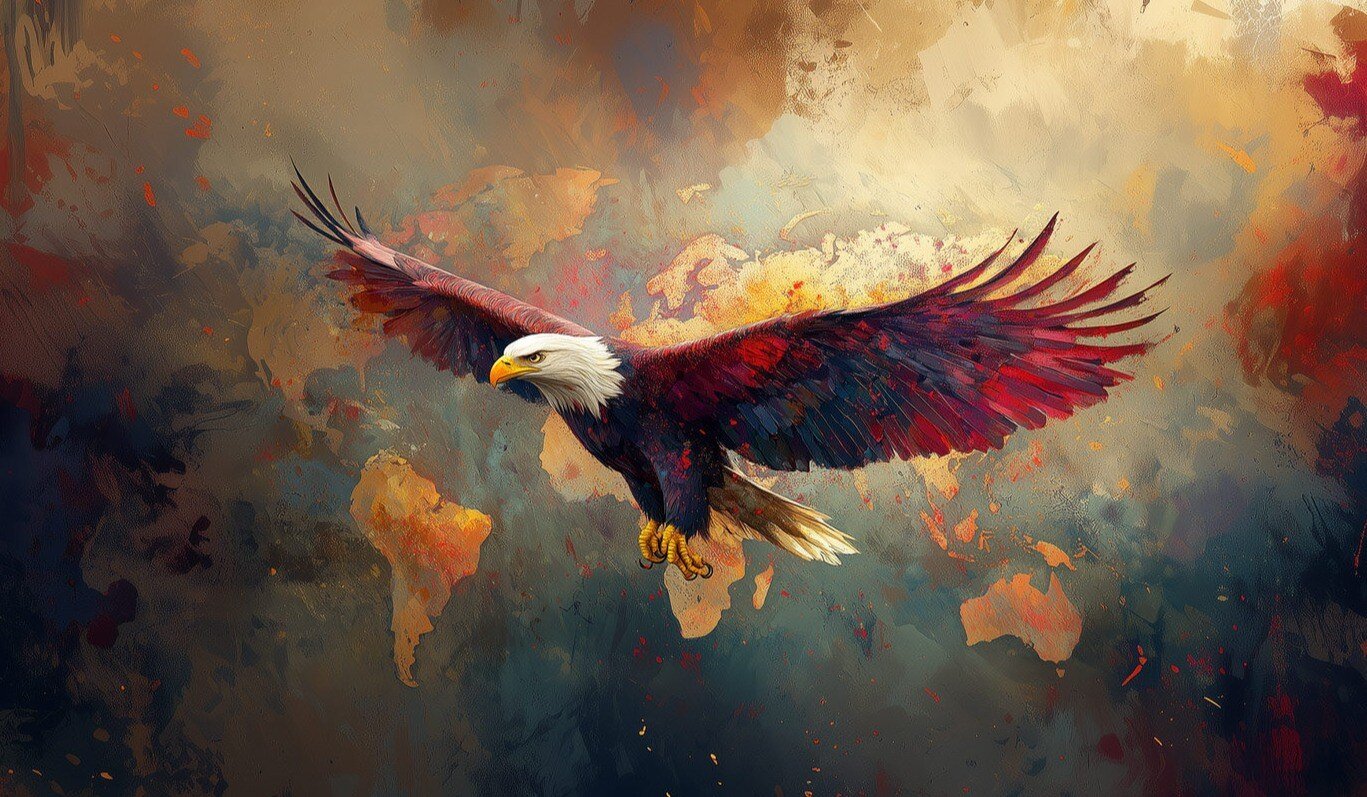
Crab
Resilience, Adaptability and Protection.

Discovering The Crab Spirit
The crab stands as a symbol of resilience, adaptability, and protection. At the core of the crab's essence is the spirit of persistent determination. With its tenacious grip and the armor-like exoskeleton, the crab embodies the art of self-preservation and the capacity to thrive in shifting environments.
In its intricate dance along the shorelines, the crab reminds us of the ebb and flow of life, urging us to move with the currents yet remain grounded. The spiritual resonance of the crab inspires us to embrace life's transitions and to find strength in vulnerability.
The crab also symbolizes the journey of introspection. Its habit of retreating into its shell resonates with our own need for self-reflection, emphasizing the importance of boundaries and personal space. The spiritual lessons of the crab prompt us to guard our inner sanctum, to value our emotional shell, and to navigate life's complexities with tact and intuition.
Beyond resilience, adaptability, and introspection, the crab's wisdom underscores the importance of cyclical growth. With its periodic molting, the crab signifies renewal and rebirth. It serves as a reminder that shedding the old can pave the way for the new, urging us to evolve with courage. The spiritual teachings of the crab guide us to embrace change, to uphold our individuality, and to face life's challenges with unwavering spirit and insight.
Prefer to listen to this article?
Check out our podcast!
Newsletter
Keep reading ↓
- Spirit Animals ↓
- See All
- Alligator
- Anaconda
- Ant
- Arabian Oryx
- Beaver
- Bee
- Beetle
- Black Bear
- Buffalo
- Butterfly
- Camel
- Cat
- Cheetah
- Chimpanzee
- Condor
- Coyote
- Crab
- Dog
- Dolphin
- Dove
- Dragonfly
- Elephant
- Elk
- Emu
- Falcon
- Flamingo
- Fox
- Frog
- Gazelle
- Giraffe
- Goose
- Gorilla
- Grasshopper
- Hawk
- Hedgehog
- Hippopotamus
- Horse
- Hummingbird
- Hyena
- Jaguar
- Kangaroo
- Kiwi
- Koala
- Koi Fish
- Komodo Dragon
- Kookaburra
- Ladybug
- Lamb
- Lemur
- Lion
- Lizard
- Llama
- Manatee
- Mandarin Duck
- Meerkat
- Monkey
- Moose
- Mountain Goat
- Mouse
- Nightingale
- Octopus
- Orca Whale
- Otter
- Owl
- Ox
- Panda
- Panther
- Parrot
- Peacock
- Polar Bear
- Quetzal
- Rabbit
- Raccoon
- Raven
- Rhinoceros
- Rooster
- Salmon
- Sea Turtle
- Seahorse
- Shark
- Sloth
- Snake
- Snow Leopard
- Spider
- Squirrel
- Starfish
- Swan
- Tiger
- Tortoise
- Whale
- Wolf
- Wombat
- Zebra
What Does The Crab Represent?
Crabs are remarkable creatures distinguished by a set of distinct qualities that enable them to thrive in varied environments, from the depths of the oceans to the sandy shores. At the forefront is their exoskeleton, a tough, chitinous armor that not only offers protection from predators but also provides support, akin to our own skeletal system. They possess a unique set of appendages - ten in total - with the front pair evolved into formidable pincers, adept for defense, hunting, and feeding. Their sideways locomotion, a signature trait, allows them to navigate complex terrains and tight spaces efficiently. Crabs also demonstrate a high degree of adaptability, with certain species capable of living both in saltwater and freshwater, while others have evolved mechanisms to extract oxygen from the air during periods of low tide. Additionally, these decapods are known for their keen sense of touch and taste, thanks to the numerous sensory hairs that dot their body, aiding in their survival in diverse habitats.
Keep reading ↓
Supporting content
Cultural and Mythological Significance Of The Crab Spirit
Crabs, due to their unique appearance and behavior, have captured the imaginations of various cultures throughout history, embedding themselves into myths, legends, and the broader tapestry of human stories.
In the realm of astrology, the crab is synonymous with the sign of Cancer. Those born under this sign, which is represented by the crab, are believed to possess qualities of sensitivity, intuition, and protectiveness, much like the creature's nurturing behavior and its protective shell. The story behind Cancer's association with the crab originates from Greek mythology. In one version, the crab was sent by Hera to distract Hercules during his battle with the Hydra. Despite its efforts, the crab was crushed, but Hera, in appreciation of its service, immortalized it as a constellation in the night sky.
In various coastal cultures, crabs are seen as guardians of the shoreline, embodying both the land and sea's qualities. Their ability to navigate between these realms made them symbols of transition, transformation, and the cyclic nature of life.
In some Pacific Islander myths, crabs are associated with the moon, drawing parallels between their cyclical molting process and the lunar phases. The moon's gravitational pull, which influences tides, also affects crab behaviors, deepening this celestial connection.
In Chinese culture, crabs are associated with prosperity and success, particularly due to their abundant presence during the autumn season, a time of harvest. Consuming crabs during festivals and special occasions is not just a culinary delight but also symbolizes hope for good fortune and abundance in the coming times.
Thus, across different cultures and times, crabs have been more than just marine creatures. They are symbols, mythological entities, and storied beings that carry with them tales of the cosmos, nature's rhythms, and human aspirations.
Keep reading ↓
Supporting content
A Crab In My Deams
Dreaming of a crab can encompass a myriad of symbolic meanings, each influenced by cultural, personal, and contextual nuances. The crab's hard shell might be indicative of your protective nature or perhaps a defensive stance you've adopted in wakeful life, shielding yourself from emotional turbulence or detaching from others. In contrast, considering the crab's unique sideways movement, such a dream could hint at indirect or slow progress in certain life situations, suggesting feelings of stagnation or the necessity for an unconventional approach to challenges. This creature's powerful grip also brings to mind themes of tenacity, hinting at a tenacious attitude, determination, or even a reluctance to release something or someone.
Delving deeper into its natural behaviors, the crab's tendency to burrow or hide might be emblematic of concealed emotions, untapped potential, or deep-seated secrets. If the dream crab exhibits aggression, it might be a reflection of underlying conflicts or tensions in your waking life. However, personal experiences and associations play a pivotal role in interpretation; a childhood memory, a recent encounter, or a cultural story about crabs can shape the dream's significance uniquely for the dreamer. Reflection on individual emotions and life situations can shed light on why such symbols materialize in our subconscious realm.
Keep reading ↓
How the Crab Contributes To Scientific Research
The crab, a staple in marine ecosystems worldwide, plays a significant role in fields like ecology, physiology, and developmental biology. Crabs serve as model organisms to understand molting processes and the hormonal regulation of growth in arthropods, given their well-defined molting cycles. The horseshoe crab's blue blood contains a vital substance called Limulus Amebocyte Lysate (LAL), essential for testing the sterility of medical equipment and vaccines, as it rapidly identifies bacterial contamination.
Guided Visualization To Connect With The Crab Spirit
Complement your ritual with...
Binaural beats!
- Find a quiet space where you won't be disturbed. Dim the lights or light a candle. If possible, sit or lie down on the floor, allowing yourself to feel grounded.
- Take a deep breath in, feeling the air filling your lungs, then exhale slowly. With each breath, let go of the day's stresses, distractions, and any tension in your body.
- Imagine yourself standing at the edge of a serene beach. The sand is soft and warm beneath your feet. You can hear the gentle lapping of waves, and a light breeze rustles your hair. The setting sun paints the sky with hues of pink and orange, casting a golden shimmer on the water.
- As you walk along the shoreline, you notice a crab emerging from its burrow. It stops, sensing your presence. You kneel down to observe it, ensuring you maintain a safe and respectful distance.
- Notice its detailed exoskeleton, its attentive eyes, and its cautious, yet curious demeanor. Recognize the crab's protective shell, and remember the times you've protected yourself or your loved ones.
- The crab starts moving, its legs making a pattern on the sand. Instead of going forward, it moves sideways, reminding you of life's indirect paths, the detours, and the unique journeys each one of us takes.
- Now, close your eyes in this meditation space, and imagine extending your energy towards the crab, aiming to connect with its spirit. Feel its ancient wisdom, its deep connection to both land and sea, and its ability to navigate through challenges. Let yourself absorb its lessons of resilience, adaptability, and the power of viewing things from different angles.
- Ask the crab spirit if it has any messages or guidance for you. Take a moment to listen. Even if you don't hear anything, trust that its energy and wisdom are being imparted to you.
- Open your eyes within this meditative space and see the crab one last time. Silently express your gratitude to it for sharing its energy and insights with you. Watch as it slowly retreats back to its burrow, disappearing beneath the sand.
- Begin to withdraw from the beach, taking with you all the experiences, lessons, and emotions from this journey. The sun has now set, and the stars begin to twinkle in the darkening sky.
- Slowly become aware of your surroundings outside of the meditation. Wiggle your fingers and toes, and when you're ready, open your eyes. Take a deep breath, feeling rejuvenated, connected, and enriched by the spirit of the crab.
Habitat, Behaviours and Ecological Importance Of The Crab
Habitat:
Crabs inhabit a diverse range of environments across the world, showcasing their adaptability and resilience. Primarily aquatic, they are found in the vast depths of the oceans, teeming coral reefs, brackish waters of estuaries, and the intertidal zones of coastal regions. Many species are perfectly adapted to life on sandy, rocky, or muddy substrates, often burrowing into the ground to seek shelter or to ambush prey. Mangrove forests, with their complex root systems, provide sanctuary for certain crabs, offering both food and protection. Remarkably, some species have evolved to spend considerable time on land, breathing air, and returning to the water only to reproduce. Whether in the saline waters of the tropics or the cold currents of polar regions, crabs have carved out niches for themselves, highlighting their ecological versatility.
Behaviours:
- Sideways Locomotion: Unlike many animals that move forward or backward, most crabs are known for their distinct sideways movement. Their legs are arranged in a manner that makes lateral movement more efficient, allowing them to quickly scuttle side-to-side to evade predators or chase prey.
- Burrowing: Many crab species have the behavior of digging and burrowing into the sand, mud, or substrate. This behavior provides them with protection from predators, extreme weather, and the hot sun. It can also serve as a method of hunting, where the crab lies in wait to ambush its prey.
- Molting: As crabs grow, they undergo a process called molting where they shed their old exoskeleton and form a new one. This is an essential behavior for their growth. During and shortly after molting, the crab's new shell is soft, making them vulnerable to predators. As such, they often hide or become more reclusive during this time to ensure their safety.
- Defensive Posturing: When threatened, crabs often adopt a defensive posture. They raise their claws and open them wide, ready to pinch any potential threat. This behavior is not only a defense mechanism but also a way to assert dominance or deter competitors.
- Parental Care: Some species of crabs, especially female crabs, exhibit maternal behaviors. They carry their eggs attached to the undersides of their bodies until they are ready to hatch. During this period, they may become more cautious and protective, ensuring the safety of their offspring. After the eggs hatch, certain species continue to protect and care for their young until they reach a more independent stage.
Ecological Importance:
Crabs play a pivotal role in maintaining the ecological balance of aquatic and coastal ecosystems. As both predators and prey, they form an integral link in the food web. Their scavenging behavior aids in the decomposition process, breaking down dead organic material, which helps recycle nutrients back into the soil and water. In their role as burrowers, crabs enhance sediment oxygenation, facilitating the growth of beneficial bacteria and affecting sediment structure, which can influence the habitats of other marine life. Furthermore, their feeding habits often control the populations of their prey, such as smaller invertebrates, ensuring that no single species dominates. In mangrove ecosystems, crabs contribute to leaf litter breakdown, accelerating the decomposition process and supporting the nutrient dynamics of these crucial coastal buffers.
Shop
Connect with the essence of our Spirit Animals!

Beach Towel
Buy Now

Sherpa Blanket
Buy Now

Flag Wall Art
Buy Now

Oracle Decks
Buy Now
From Our Blog
Stay up to date with our latest articles!

What Leadership Really Means (And What We’re Forgetting)

Brains, Hearts & Bold Moves with Lara Stalquist

What’s Really Worth Stressing About? Reclaiming Your Peace In A World That’s Always “On”
Please note:
It is crucial to acknowledge that the symbology and interpretations can differ greatly among various cultures, religious ideologies, and individual viewpoints. The significance and comprehension of these spirit animals may vary depending on the particular mythological backdrop or the spiritual and philosophical framework through which they are approached. The descriptions of these Oracle Cards are based on information gathered from various sources. Our aim is to provide an overview and a fictional interpretation and we cannot guarantee the accuracy or completeness of this information. The artwork featured on these Oracle Cards have been crafted by digital artists and designers, Relmi Damiano and Sacha Damiano, in conjunction with Artificial Intelligence that has been enhanced by human intervention. The visual imagery serves as a fictional representation of some of the symbols associated with these goddesses throughout history.

